Please note this is an old version of this entry, which may differ significantly from the current revision.
Urban building energy modeling (UBEM) is a practical approach in large-scale building energy modeling for stakeholders in the energy industry to predict energy use in the building sector under different design and retrofit scenarios. UBEM is a relatively new large-scale building energy modeling (BEM) approach which raises different challenges and requires more in-depth study to facilitate its application.
- urban building energy modeling
- physics-based
- bottom-up
- energy conservation measures
1. Introduction
Urban building energy modeling (UBEM) is a term used in the literature to refer to different types of simulations that are not necessarily related to the buildings in the “urban” area. Urban-scale, large-scale, and district-scale building energy modeling have been used in the literature interchangeably, but they all refer to the modeling and simulation of a group of buildings to study their energy use and behavior. The large-scale building energy modeling (herein UBEM) has been trending for the past decade (Figure 1) due to its effectiveness in providing a significant amount of data on a large group of buildings that could be used by different stakeholders in the energy sector such as energy policymakers, energy companies, building portfolio managers, and researchers. Making the modeling and simulation process more efficient in speed, flexibility, cost, and accuracy is critical, and this requires a thorough understanding of the current state of and future trends in UBEM tools and techniques.
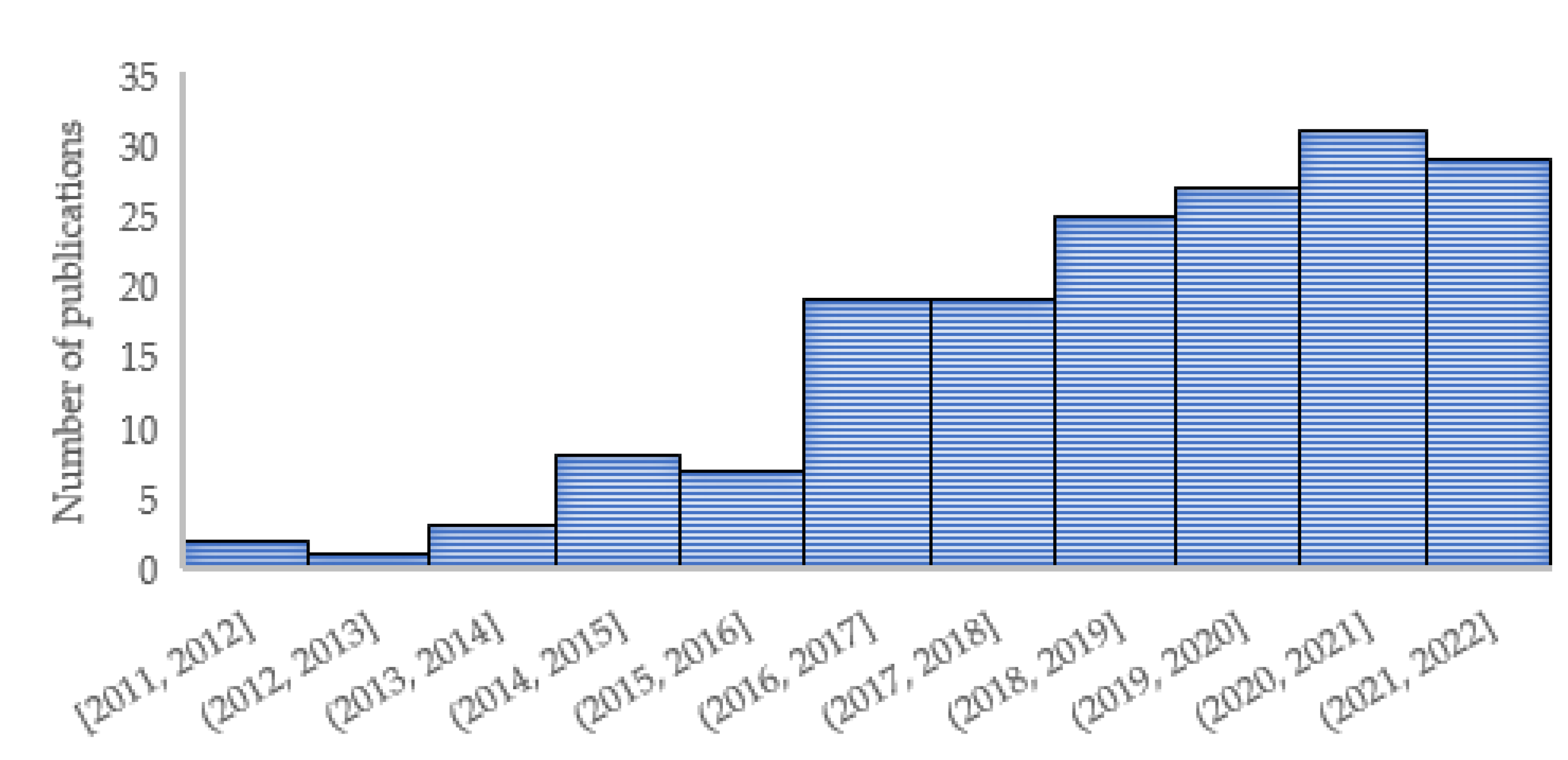
Figure 1. The number of publications in physics-based urban building energy modeling per year since 2011 based on the Scopus search platform.
UBEM models are developed for different purposes, such as identifying the buildings with high energy use intensity (EUI), regions with high energy consumption, microclimate impact on building energy use, and studying the energy saving of different energy conservation measures (ECMs) on a large scale. Finding the most effective ECMs is one of the essential end goals in energy modeling projects; however, not all the UBEM approaches are suitable for this purpose. This highlights the importance of such systematic literature reviews.
In that context, it is necessary to understand the state-of-the-art physics-based UBEM methods and tools, especially those suitable for assessing different ECMs. Therefore, the objectives of this entry are defined as follows: (1) to perform a reproducible systematic review of the literature on research papers on physics-based UBEM case studies; (2) to extract, categorize, and analyze the tools, files schemas, data sources, building systems, and environmental data in these case studies, and (3) to find and categorize the existing challenges in physics-based UBEM and propose future research directions. The papers reviewed in this study either use a physic-based simulation engine or adopt similar types of inputs required for physics-based simulation that are or could be applied in ECM analysis.
2. UBEM
Physics-based UBEM could include multiple aspects and steps proposed by researchers such as data preprocessing (e.g., geometric data, non-geometric data, weather data, and energy use), model generation, simulation, calibration, and application (e.g., urban planning, stock-level carbon reduction, building-level recommendations, and building-to-grid integrations) [1]. Figure 2 proposes a five-step data extraction/presentation approach for UBEM studies. This data and metadata adoption structure help to take a systematic and standard practice to provide and collect data in UBEM projects.
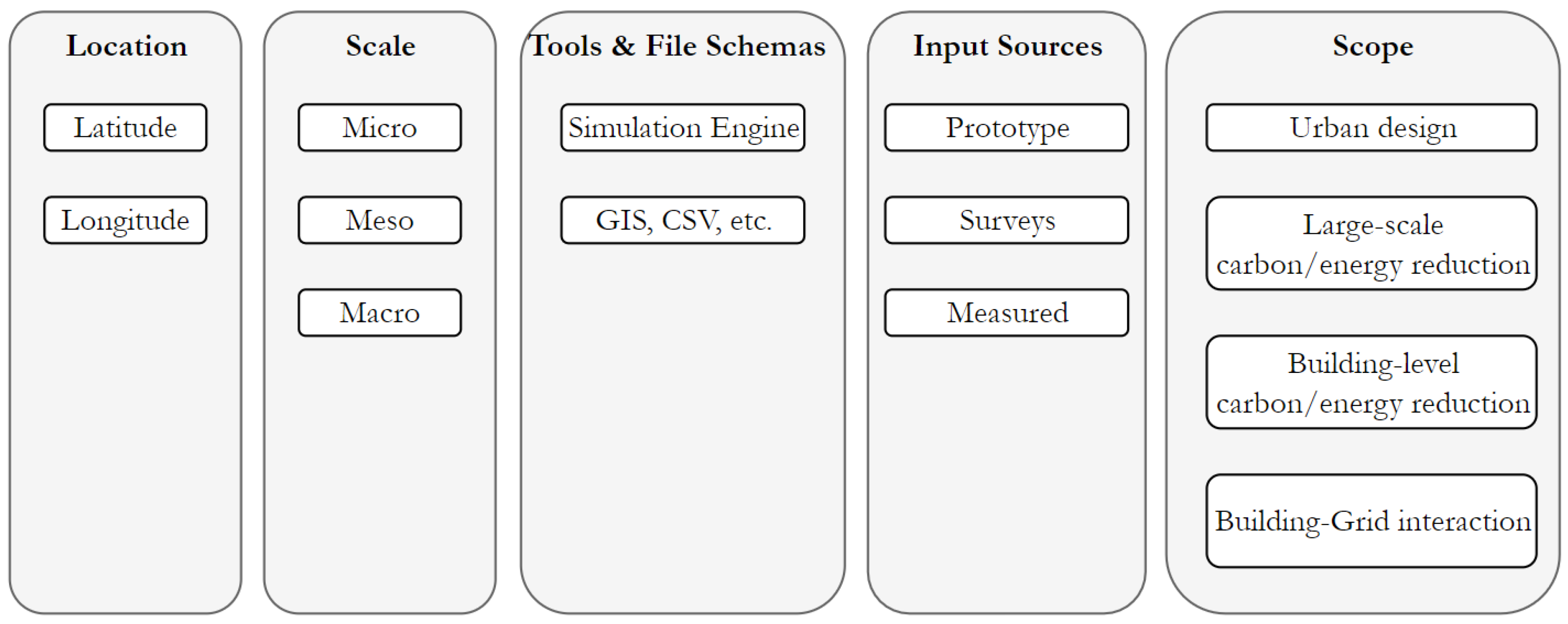
Figure 2. Physics-based urban building energy modeling project definition, data, and metadata extraction approach and categories.
The scale of the UBEM study could determine the necessary tools and scope of the project. Oraiopoulos and Howard (2022) [2] performed a systematic review and adopted a statistical approach in UBEM to use micro, meso, and macro scales to categorize the UBEM projects based on the number of buildings (Figure 3).
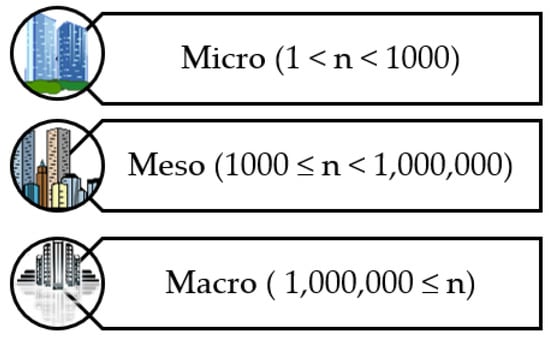
Figure 3. Suggested scaling categories for urban building energy modeling.
It is shown that most physics-based UBEM case studies cover under 100,000 buildings (Figure 4). More specifically, 46 out of 61 eligible studies model less than 10,000 buildings. This includes 86% of the eligible case studies reviewed in this entry. About 50% of the case studies model less than 1000 buildings (i.e., Microscale), and only about 3% of case studies model more than 500,000 buildings. The methods and tools used in the reviewed papers could be scaled up to model and simulate a large number of buildings, but lack of data could hinder that.
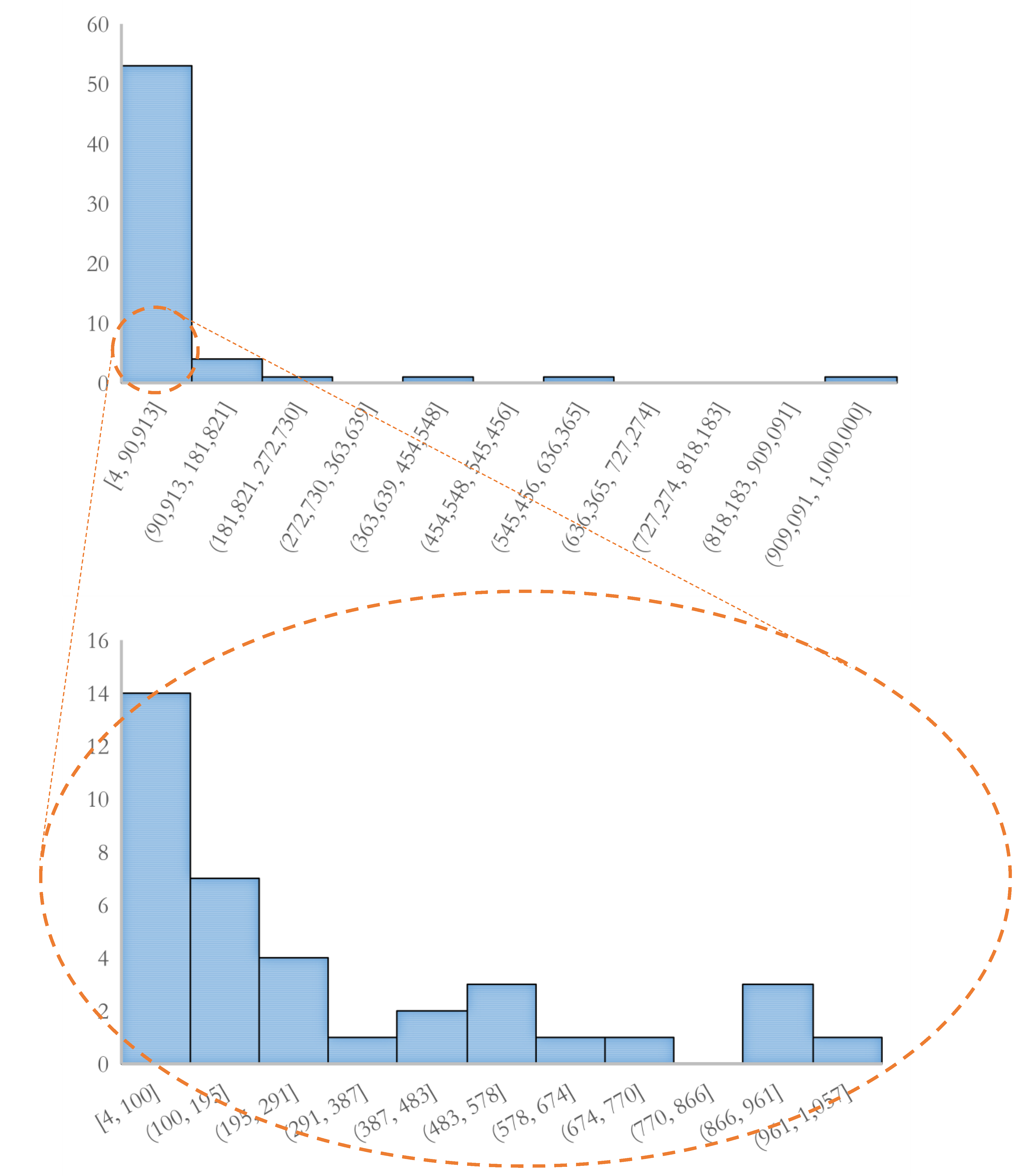
Figure 4. The frequency of the number of buildings simulated in physics-based urban building energy modeling case studies.
Researchers study the modeling and simulation techniques in UBEM, and their advantages and disadvantages are compared [3][4]. Boghetti et al. (2020) [3] compared two UBEM development approaches (i.e., physics-based vs. data-driven) and noted that data-driven models rely on many data points and physics-based methods need more extended simulation and preparation time. Because ECM evaluation is one of the areas of study in this entry, the selected papers are focused on physics-based modeling.
Studies on bottom-up physics-based urban building energy models might simulate multiple buildings independently, focus on microclimate effects (e.g., urban heat island (UHI)), or combine these two and make the necessary adjustments in UBEM to consider the microclimate effects (Figure 5). These effects could include the shading from surrounding objects, increased temperature of the urban area due to the UHI effect, the long-wave radiation from other buildings, or the Heating, Ventilation, and Air Conditioning (HAVC) system’s heat release that could affect the urban climate and other buildings [5] increasing the outdoor air temperature by 2.8 °C in commercial neighborhoods. Luo et al. (2019) [6] showed that the thermal interaction between buildings in UBEM for a dense urban area with high-rise buildings based on the long-wave radiations could affect the heating and cooling loads by up to about 3.6%. Therefore, the microclimate could directly impact individual buildings’ energy performance, especially in dense areas. However, this is not necessarily considered in all the UBEM studies; hence, the “individual building simulation” category needs to be identified and studied separately (Figure 5).
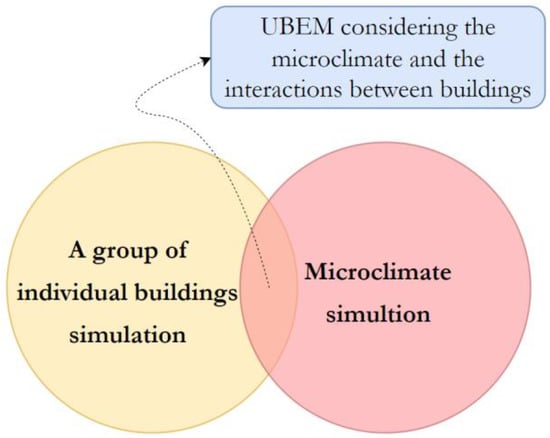
Figure 5. Two distinct areas of study in urban building energy modeling.
The interface between these two approaches includes UBEM studies where at least one component of microclimates such as the UHI effect or long-wave radiation between buildings is considered in the physics-based simulation. This could be done by tuning the weather file using an urban weather generator (UWG) [7] or using external and complementary tools to include additional interactions between buildings [8]. The majority of papers selected for full-text review in this entry could be categorized under the ‘group of individual building simulation’.
Review papers study different aspects of physics-based UBEM. Table 1 shows the selected review papers, which could identify the main UBEM field of research. The identified areas include general review papers on tools, methods, and challenges in UBEM, occupant-centric studies, UBEM tools, data acquisition methods, classification approaches, energy-saving potentials, and the accuracy of UBEM. Other than the first category, there are limited review studies on different aspects of UBEM, especially on critical areas such as archetype development, data sources, acquisition techniques, calibration, and energy conservation evaluation.
Table 1. Review studies on urban building energy modeling.
| Reference | UBEM Research Area |
|---|---|
| General Review | |
| [9] | Advancing urban building energy modeling through new model components and applications |
| [10] | Bottom-up physics-based approaches in UBEM |
| [11] | Information modelling for urban building energy simulation |
| [12] | AUBEM modeling approaches and procedures |
| [13] | State-of-the-art and prospects in urban building energy modeling |
| [14] | Ten questions on urban building energy modeling |
| [15] | The nascent field of urban building energy modeling |
| [16] | UBEM methods and tools using qualitative and quantitative analysis |
| [1] | Use cases in urban building energy modeling |
| UBEM tools | |
| [17] | A comparison of available tools in urban building energy modeling |
| [18] | UBEM tools |
| [19] | UBEM tools for district-scale energy systems |
| Occupant-centric | |
| [20] | Approaches, inputs, and data sources in occupant-centric urban building energy modeling |
| [21] | Occupant behavior in urban building energy models |
| Data acquisition | |
| [22] | Data acquisition for urban building energy modeling |
| [23] | GIS Data Extraction and Visualization to Support Urban Building Energy Modeling |
| [24] | Infrared thermography in the built environment |
| Classification and archetype development | |
| [25] | Archetype development strategies for energy assessment at the urban scale |
| [26] | Developing a common approach for classifying building stock energy models |
| Energy conservation potentials | |
| [27] | Energy saving potential for large-scale building |
| [28] | Estimating the energy-saving potential in national building stocks |
| Accuracy and calibration | |
| [2] | Accuracy of Urban Building Energy Modeling |
Figure 6 shows the occurrence frequency of keywords and their link strength in UBEM research. Specific dependent keywords such as ‘buildings,’ ‘building energy modeling,’ and ‘urban building energy modeling’ have the highest use frequency and link strength. It is shown that (1) energy utilization, (2) energy efficiency, (3) urban planning, (4) energy management, and (5) urban planning are among the top independent keywords in UBEM research. It could be observed that critical aspects of UBEM such as ‘calibration’ are not studied as often as other aspects. Figure 7 shows certain research areas of UBEM such as climate change, greenhouse gas emissions, offices, housing, and retrofitting are among the topics studied more recently (i.e., after 2020).
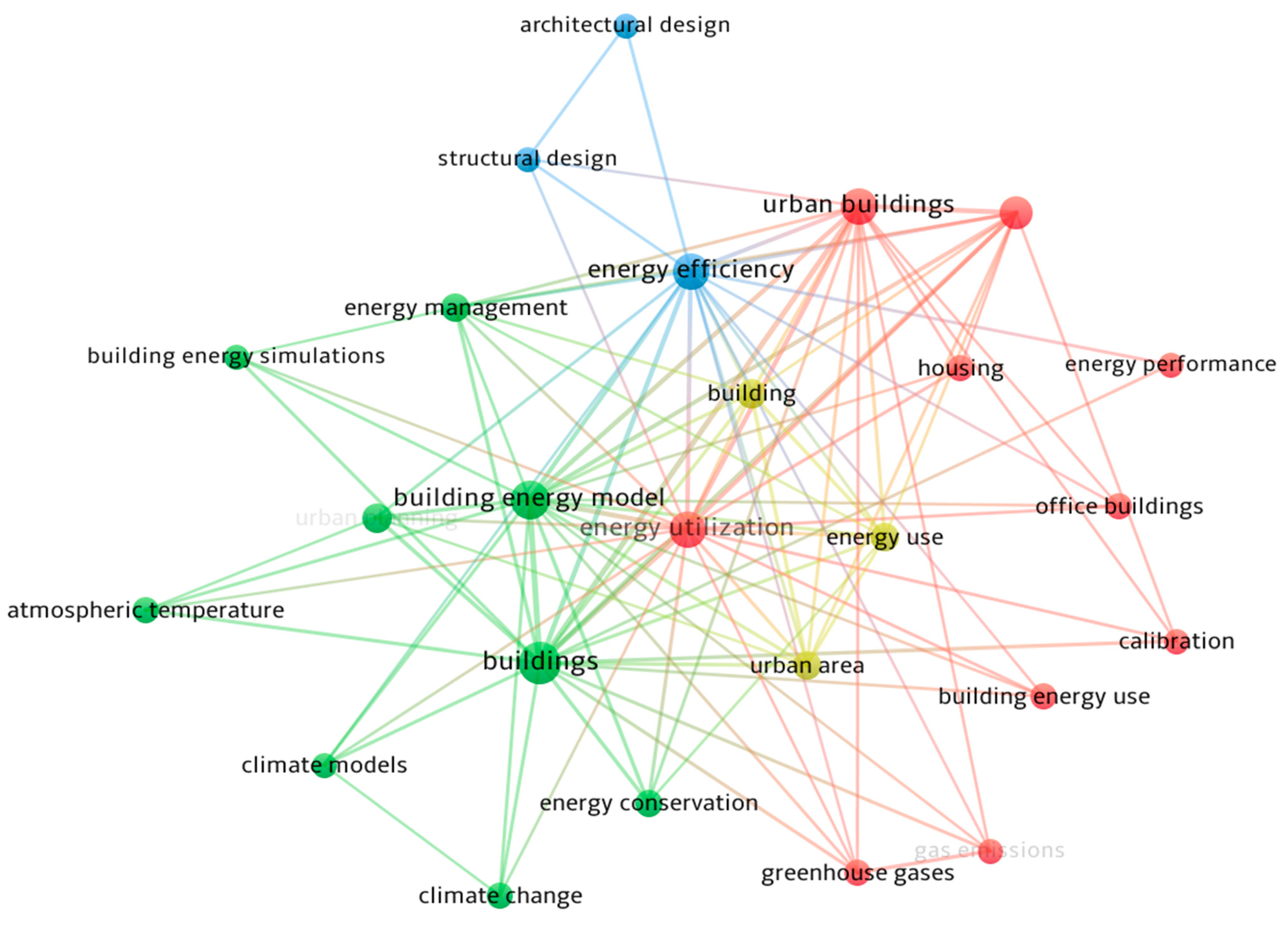
Figure 6. Keywords with the highest use in urban building energy modeling research studies developed by VOSviewer.
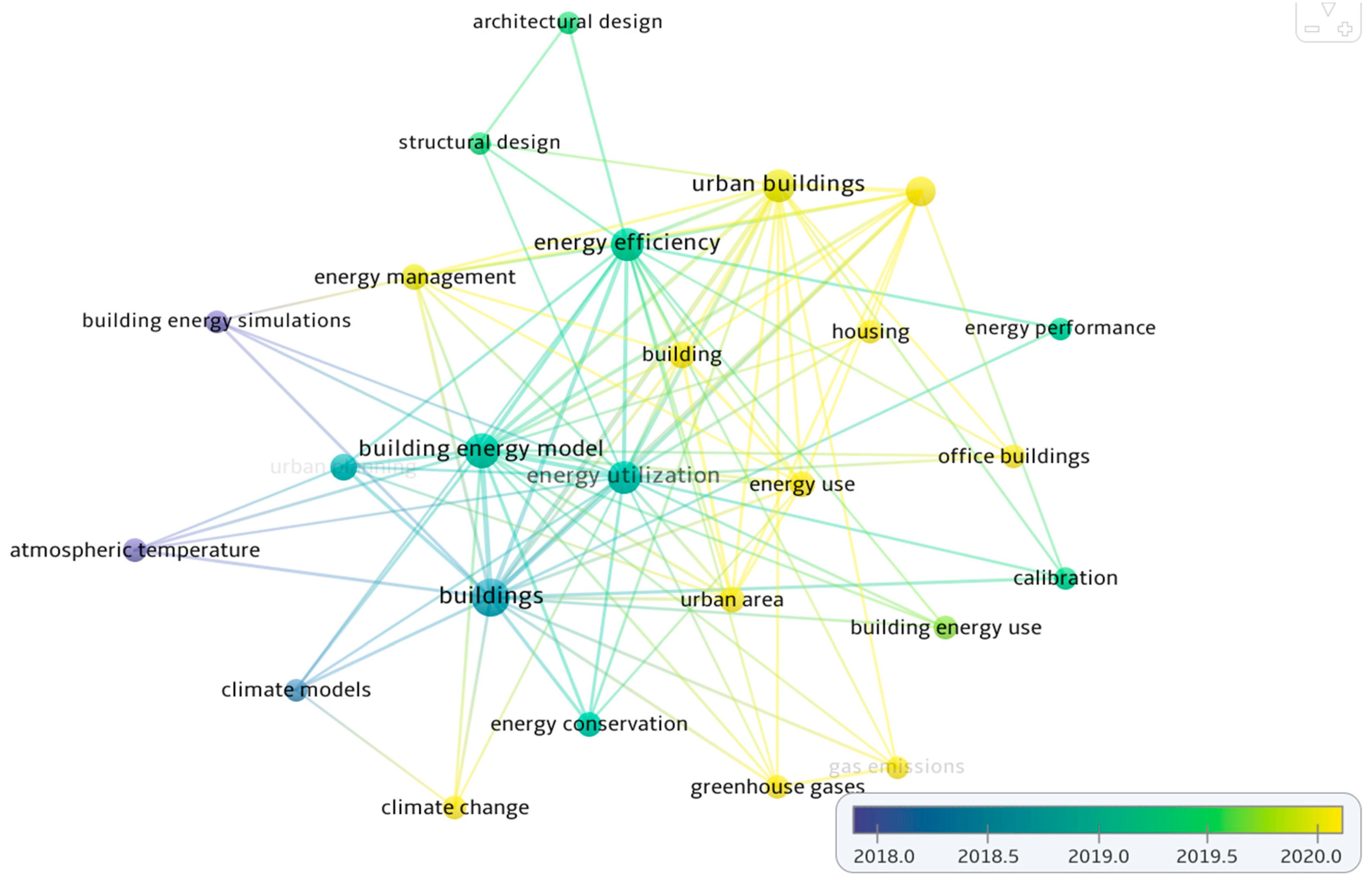
Figure 7. The frequency of different keywords in urban building energy modeling studies before 2018 and after 2020 developed by VOSviewer.
3. Challenges in UBEM
Researchers have identified several challenges and shortcomings that slow down the application of UBEM and hinder it from achieving its full potential in the built environment. Figure 8 summarizes and categorizes these challenges. Ten distinguished groups list the lack of the following items:
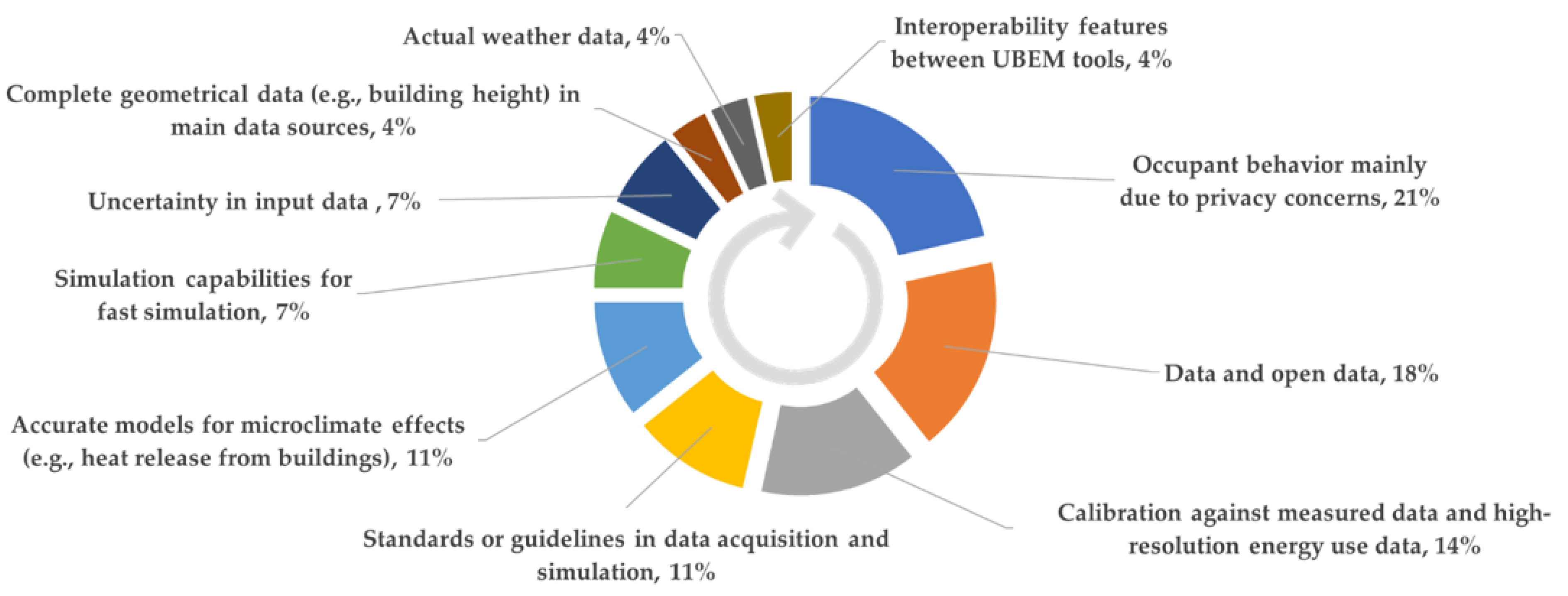
Figure 8. Areas in physics-based urban building energy modeling with shortcomings identified by researchers.
Public databases are more common in data-driven modeling [48] since those techniques do not necessarily require a particular format or file schema, unlike physics-based UBEM. This could be a focus of future research activities.
The research studies do not directly address or explain the computation approach in physics-based computer models in UBEM. However, similar to other computer-based simulations, the parallel computation effectively reduced the simulation time by up to one-fifth of the original time [49].
This entry is adapted from the peer-reviewed paper 10.3390/en15228649
References
- Ang, Y.Q.; Berzolla, Z.M.; Reinhart, C.F. From concept to application: A review of use cases in urban building energy modeling. Appl. Energy 2020, 279, 115738.
- Oraiopoulos, A.; Howard, B. On the accuracy of Urban Building Energy Modelling. Renew. Sustain. Energy Rev. 2022, 158, 111976.
- Boghetti, R.; Fantozzi, F.; Kämpf, J.; Mutani, G.; Salvadori, G.; Todeschi, V. Building energy models with morphological urban-scale parameters: A case study in turin. Build. Simul. Appl. 2020, 2020, 131–139.
- Nageler, P.; Koch, A.; Mauthner, F.; Leusbrock, I.; Mach, T.; Hochenauer, C.; Heimrath, R. Comparison of dynamic urban building energy models (UBEM): Sigmoid energy signature and physical modelling approach. Energy Build. 2018, 179, 333–343.
- Bueno, B.; Norford, L.; Pigeon, G.; Britter, R. Combining a Detailed Building Energy Model with a Physically-Based Urban Canopy Model. Boundary-Layer Meteorol. 2011, 140, 471–489.
- Luo, X.; Hong, T.; Tang, Y.-H. Modeling Thermal Interactions between Buildings in an Urban Context. Energies 2020, 13, 2382.
- Boccalatte, A.; Fossa, M.; Gaillard, L.; Menezo, C. Microclimate and urban morphology effects on building energy demand in different European cities. Energy Build. 2020, 224, 110129.
- Hong, T.; Luo, X. Modeling Building Energy Performance in Urban Context. In Proceedings of the 2018 Building Performance Analysis Conference and SimBuild Co-Organized by ASHRAE and IBPSA-USA, Chicago, IL, USA, 26 September 2018.
- Dahlström, L.; Broström, T.; Widén, J. Advancing urban building energy modelling through new model components and applications: A review. Energy Build. 2022, 266, 112099.
- Ferrando, M.; Causone, F.; Hong, T.; Chen, Y. Urban building energy modeling (UBEM) tools: A state-of-the-art review of bottom-up physics-based approaches. Sustain. Cities Soc. 2020, 62, 102408.
- Malhotra, A.; Bischof, J.; Nichersu, A.; Häfele, K.-H.; Exenberger, J.; Sood, D.; Allan, J.; Frisch, J.; van Treeck, C.; O’Donnell, J.; et al. Information modelling for urban building energy simulation—A taxonomic review. Build. Environ. 2021, 208, 108552.
- Li, W.; Zhou, Y.; Cetin, K.; Eom, J.; Wang, Y.; Chen, G.; Zhang, X. Modeling urban building energy use: A review of modeling approaches and procedures. Energy 2017, 141, 2445–2457.
- Johari, F.; Peronato, G.; Sadeghian, P.; Zhao, X.; Widén, J. Urban building energy modeling: State of the art and future prospects. Renew. Sustain. Energy Rev. 2020, 128, 109902.
- Hong, T.; Chen, Y.; Luo, X.; Luo, N.; Lee, S.H. Ten questions on urban building energy modeling. Build. Environ. 2020, 168, 106508.
- Reinhart, C.F.; Davila, C.C. Urban building energy modeling—A review of a nascent field. Build. Environ. 2016, 97, 196–202.
- Ali, U.; Shamsi, M.H.; Hoare, C.; Mangina, E.; O’Donnell, J. Review of urban building energy modeling (UBEM) approaches, methods and tools using qualitative and quantitative analysis. Energy Build. 2021, 246, 111073.
- Johari, F. Towards urban building energy modelling: A comparison of available tools. In Proceedings of the ECEEE 2019 Summer Study on Energy Efficiency: Is Efficient Sufficient? Hyères, France, 3–8 June 2019; pp. 1515–1524.
- Ferrando, M.; Causone, F. An Overview of Urban Building Energy Modelling (UBEM) Tools. Build. Simul. 2020, 16, 3452–3459.
- Allegrini, J.; Orehounig, K.; Mavromatidis, G.; Ruesch, F.; Dorer, V.; Evins, R. A review of modelling approaches and tools for the simulation of district-scale energy systems. Renew. Sustain. Energy Rev. 2015, 52, 1391–1404.
- Dabirian, S.; Panchabikesan, K.; Eicker, U. Occupant-centric urban building energy modeling: Approaches, inputs, and data sources—A review. Energy Build. 2022, 257, 111809.
- Happle, G.; Fonseca, J.A.; Schlueter, A. A review on occupant behavior in urban building energy models. Energy Build. 2018, 174, 276–292.
- Wang, C.; Ferrando, M.; Causone, F.; Jin, X.; Zhou, X.; Shi, X. Data acquisition for urban building energy modeling: A review. Build. Environ. 2022, 217, 109056.
- Sobieraj, D.; Mcarthur, J.J. GIS Data Extraction and Visualization to Support Urban Building Energy Modelling GIS Data Extraction and Visualization to Support Urban Building Energy Modelling. In Proceedings of the 15th IBPSA Conference, San Francisco, CA, USA, 7–9 August 2017; Volume 15, pp. 1428–1436.
- Martin, M.; Chong, A.; Biljecki, F.; Miller, C. Infrared thermography in the built environment: A multi-scale review. Renew. Sustain. Energy Rev. 2022, 165, 112540.
- Colleto, G.M.; Gomes, V. Review of archetype development strategies for energy assessment at urban scale. IOP Conf. Ser. Earth Environ. Sci. 2021, 855, 012021.
- Langevin, J.; Reyna, J.; Ebrahimigharehbaghi, S.; Sandberg, N.; Fennell, P.; Nägeli, C.; Laverge, J.; Delghust, M.; Mata, É.; Van Hove, M.; et al. Developing a common approach for classifying building stock energy models. Renew. Sustain. Energy Rev. 2020, 133, 110276.
- Yang, X.; Liu, S.; Zou, Y.; Ji, W.; Zhang, Q.; Ahmed, A.; Han, X.; Shen, Y.; Zhang, S. Energy-saving potential prediction models for large-scale building: A state-of-the-art review. Renew. Sustain. Energy Rev. 2022, 156, 111992.
- Brøgger, M.; Wittchen, K.B. Estimating the energy-saving potential in national building stocks—A methodology review. Renew. Sustain. Energy Rev. 2018, 82, 1489–1496.
- de Rubeis, T.; Giacchetti, L.; Paoletti, D.; Ambrosini, D. Building energy performance analysis at urban scale: A supporting tool for energy strategies and urban building energy rating identification. Sustain. Cities Soc. 2021, 74, 103220.
- Ji, Q.; Bi, Y.; Makvandi, M.; Deng, Q.; Zhou, X.; Li, C. Modelling Building Stock Energy Consumption at the Urban Level from an Empirical Study. Buildings 2022, 12, 385.
- Tardioli, G.; Narayan, A.; Kerrigan, R.; Oates, M.; O’Donnell, J.; Finn, D.P. A methodology for calibration of building energy models at district scale using clustering and surrogate techniques. Energy Build. 2020, 226, 110309.
- Garrison, E.; New, J. Quality Control Methods for Advanced Metering Infrastructure Data. Smart Cities 2021, 4, 195–203.
- Chen, Y.; Hong, T.; Luo, X.; Hooper, B. Development of city buildings dataset for urban building energy modeling. Energy Build. 2019, 183, 252–265.
- Mathur, A.; Fennell, P.; Rawal, R.; Korolija, I. Assessing a fit-for-purpose urban building energy modelling framework with reference to Ahmedabad. Sci. Technol. Built Environ. 2021, 27, 1075–1103.
- Wang, C.; Li, Y.; Shi, X. Information Mining for Urban Building Energy Models (UBEMs) from Two Data Sources: OpenStreetMap and Baidu Map. Energy Build. 2017, 157, 166–175.
- Hong, T.; Ferrando, M.; Luo, X.; Causone, F. Modeling and analysis of heat emissions from buildings to ambient air. Appl. Energy 2020, 277, 115566.
- Issermann, M.; Chang, F.-J.; Kow, P.-Y. Interactive urban building energy modelling with functional mockup interface of a local residential building stock. J. Clean. Prod. 2021, 289, 125683.
- Ali, U.; Shamsi, M.H.; Hoare, C.; Mangina, E.; O’Donnell, J. A data-driven approach for multi-scale building archetypes development. Energy Build. 2019, 202, 109364.
- Bass, B.; New, J. Potential Demand Reduction from Buildings in a Simulated Utility. In Proceedings of the 1st ACM International Workshop on Urban Building Energy Sensing, Controls, Big Data Analysis, and Visualization, New York, NY, USA, 13–14 November 2019.
- Davila, C.C.; Jones, N.; Al-mumin, A.; Hajiah, A.; Reinhart, C. Implementation of a calibrated Urban Building Energy Model (UBEM) for the evaluation of energy efficiency scenarios in a Kuwaiti residential neighborhood. In Proceedings of the 15th IBPSA Conference, San Francisco, CA, USA, 7–9 August 2017; pp. 745–754.
- Carnieletto, L.; Ferrando, M.; Teso, L.; Sun, K.; Zhang, W.; Causone, F.; Romagnoni, P.; Zarrella, A.; Hong, T. Italian prototype building models for urban scale building performance simulation. Build. Environ. 2021, 192, 107590.
- Li, W.; Zhou, Y.; Cetin, K.S.; Yu, S.; Wang, Y.; Liang, B. Developing a landscape of urban building energy use with improved spatiotemporal representations in a cool-humid climate. Build. Environ. 2018, 136, 107–117.
- De Jaeger, I.; Reynders, G.; Callebaut, C.; Saelens, D. A building clustering approach for urban energy simulations. Energy Build. 2020, 208, 109671.
- Murshed, S.M.; Picard, S.; Koch, A. Modelling, Validation and Quantification of Climate and Other Sensitivities of Building Energy Model on 3D City Models. ISPRS Int. J. Geo-Inf. 2018, 7, 447.
- Krayem, A.; Al Bitar, A.; Ahmad, A.; Faour, G.; Gastellu-Etchegorry, J.-P.; Lakkis, I.; Gerard, J.; Zaraket, H.; Yeretzian, A.; Najem, S. Urban energy modeling and calibration of a coastal Mediterranean city: The case of Beirut. Energy Build. 2019, 199, 223–234.
- Chen, Y.; Hong, T. Impacts of building geometry modeling methods on the simulation results of urban building energy models. Appl. Energy 2018, 215, 717–735.
- Chen, Y.; Deng, Z.; Hong, T. Automatic and rapid calibration of urban building energy models by learning from energy performance database. Appl. Energy 2020, 277, 115584.
- Todeschi, V.; Javanroodi, K.; Castello, R.; Mohajeri, N.; Mutani, G.; Scartezzini, J.-L. Impact of the COVID-19 pandemic on the energy performance of residential neighborhoods and their occupancy behavior. Sustain. Cities Soc. 2022, 82, 103896.
- Zheng, Z.; Chen, J.; Luo, X. Parallel computational building-chain model for rapid urban-scale energy simulation. Energy Build. 2019, 201, 37–52.
This entry is offline, you can click here to edit this entry!
 Encyclopedia
Encyclopedia
